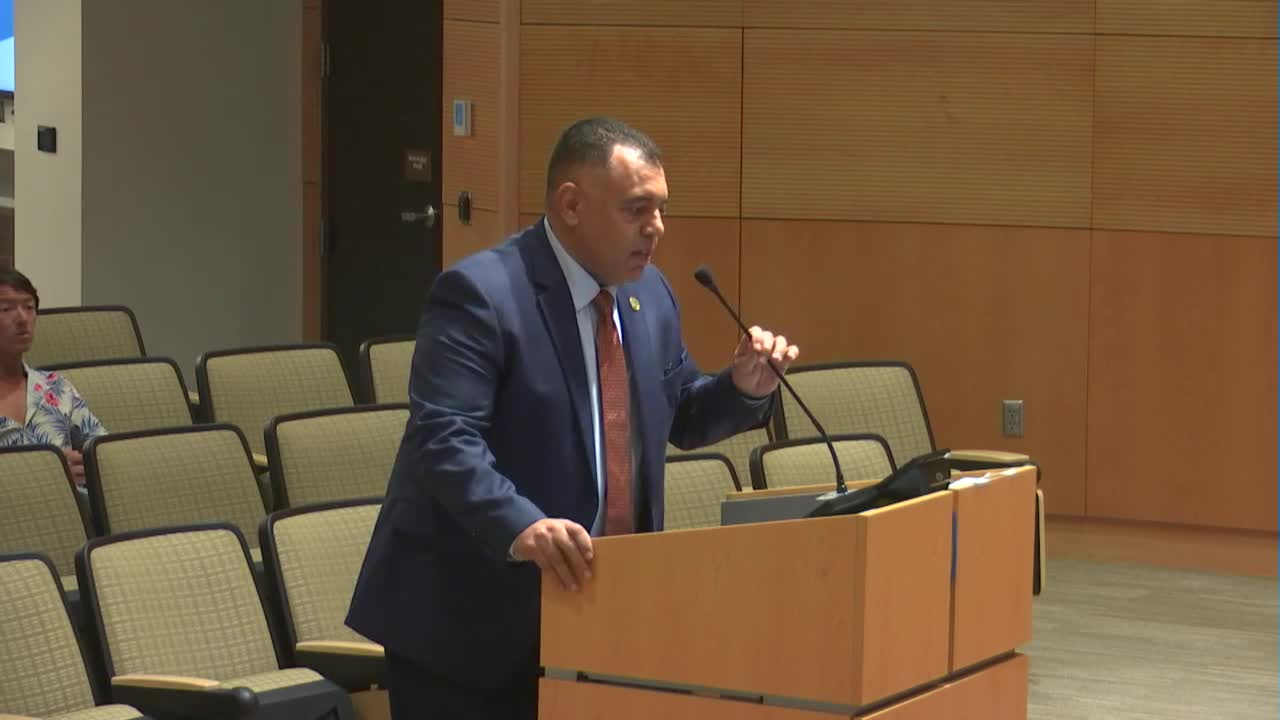MAG presents Superstition Vistas multimodal plan; study outlines major roadway, freight and nonmotorized projects to 2050
October 15, 2025 | Queen Creek, Maricopa County, Arizona
This article was created by AI summarizing key points discussed. AI makes mistakes, so for full details and context, please refer to the video of the full meeting. Please report any errors so we can fix them. Report an error »

Hannah Quincy, MAG project manager, presented the Superstition Vistas multimodal transportation planning study to the Queen Creek Town Council on Oct. 15. The study covers roughly 278 square miles in the southeastern portion of the MAG region and uses a 2050 horizon to test future transportation needs.
The study is data-driven and draws from MAG’s regional investment plan, local capital-improvement programs and local plans. It projects major growth in population and employment across the area and proposes a multimodal network of roadway widenings and new corridors, intersection operations, nonmotorized facilities, potential long-range transit extensions and freight improvements.
Key findings and recommendations include: 136 new or widened roadway projects and 34 operational intersection improvements by 2050; about 199 nonmotorized projects (multiuse paths, bike lanes and safer crossings); 12 distinct long-range freeway projects; transit-extension concepts such as possible extensions of Mesa Route 108 and Valley routes into Queen Creek; and freight-strengthening projects including rail access enhancements and a proposed Pecos industrial rail spur (the ‘‘Pirate Spur’’). MAG projects employment growth in the study area and flagged corridors likely to experience capacity constraints without investment.
Quincy said the study used MAG’s travel demand model and MAG socioeconomic projections to stress-test candidate networks. She noted the study does not produce engineering cross sections or detailed facility designs; project-level design and cross-section decisions are intended to be developed later when projects are programmed and designed.
Councilmembers asked technical questions about how model outputs translate to design decisions. Public Works Director Mohammed Youssef said the study’s role was to identify needed corridors and network-level improvements across a very large study area; Queen Creek’s transportation master plan provides more detailed, town-level roadway cross sections and design guidance.
Councilmember Benning and others raised funding concerns. Benning noted the study document and presentations do not themselves provide a funding mechanism, and Quincy confirmed the study identifies which projects already have MAG or local programming and which do not. Quincy said the final report will include an implementation and funding strategy and that the team expects to bring the final report to MAG policy committees in the coming months for formal acceptance.
Director Youssef and Quincy emphasized that the study’s purpose is to create a coordinated, regionally informed framework for anticipated growth so jurisdictions can plan and prioritize projects, including freight and nonmotorized investments that support economic development.
The council did not take formal action on the study; staff said the final report and implementation guidance would be available to member agencies and returned to MAG policy committees for acceptance.
The study is data-driven and draws from MAG’s regional investment plan, local capital-improvement programs and local plans. It projects major growth in population and employment across the area and proposes a multimodal network of roadway widenings and new corridors, intersection operations, nonmotorized facilities, potential long-range transit extensions and freight improvements.
Key findings and recommendations include: 136 new or widened roadway projects and 34 operational intersection improvements by 2050; about 199 nonmotorized projects (multiuse paths, bike lanes and safer crossings); 12 distinct long-range freeway projects; transit-extension concepts such as possible extensions of Mesa Route 108 and Valley routes into Queen Creek; and freight-strengthening projects including rail access enhancements and a proposed Pecos industrial rail spur (the ‘‘Pirate Spur’’). MAG projects employment growth in the study area and flagged corridors likely to experience capacity constraints without investment.
Quincy said the study used MAG’s travel demand model and MAG socioeconomic projections to stress-test candidate networks. She noted the study does not produce engineering cross sections or detailed facility designs; project-level design and cross-section decisions are intended to be developed later when projects are programmed and designed.
Councilmembers asked technical questions about how model outputs translate to design decisions. Public Works Director Mohammed Youssef said the study’s role was to identify needed corridors and network-level improvements across a very large study area; Queen Creek’s transportation master plan provides more detailed, town-level roadway cross sections and design guidance.
Councilmember Benning and others raised funding concerns. Benning noted the study document and presentations do not themselves provide a funding mechanism, and Quincy confirmed the study identifies which projects already have MAG or local programming and which do not. Quincy said the final report will include an implementation and funding strategy and that the team expects to bring the final report to MAG policy committees in the coming months for formal acceptance.
Director Youssef and Quincy emphasized that the study’s purpose is to create a coordinated, regionally informed framework for anticipated growth so jurisdictions can plan and prioritize projects, including freight and nonmotorized investments that support economic development.
The council did not take formal action on the study; staff said the final report and implementation guidance would be available to member agencies and returned to MAG policy committees for acceptance.
View full meeting
This article is based on a recent meeting—watch the full video and explore the complete transcript for deeper insights into the discussion.
View full meeting
